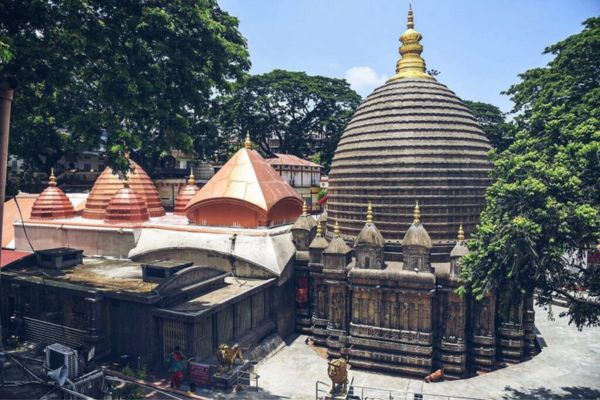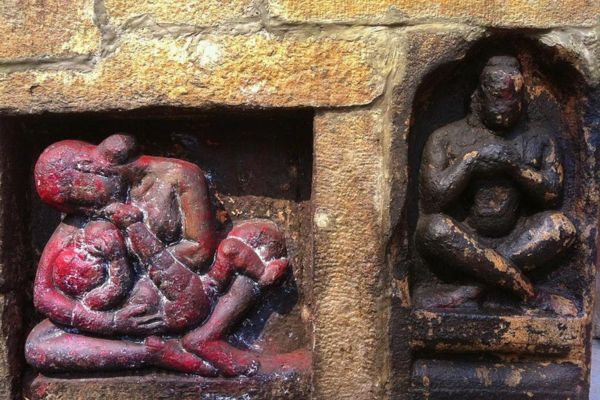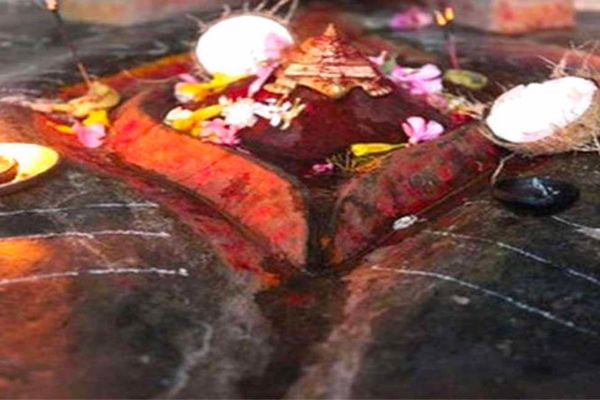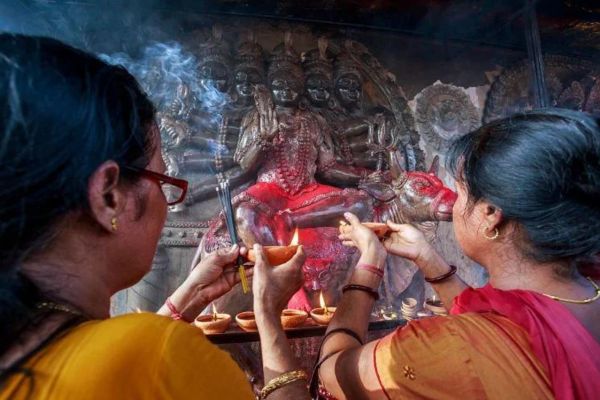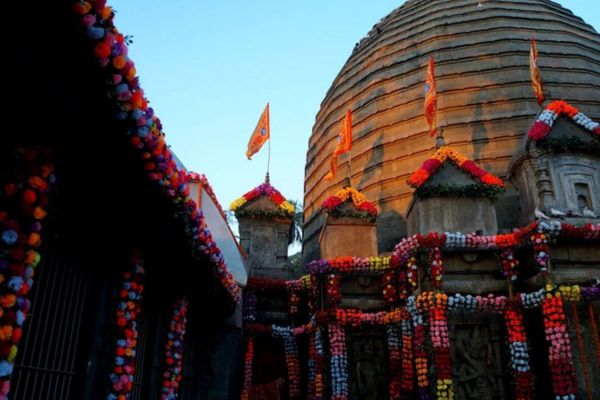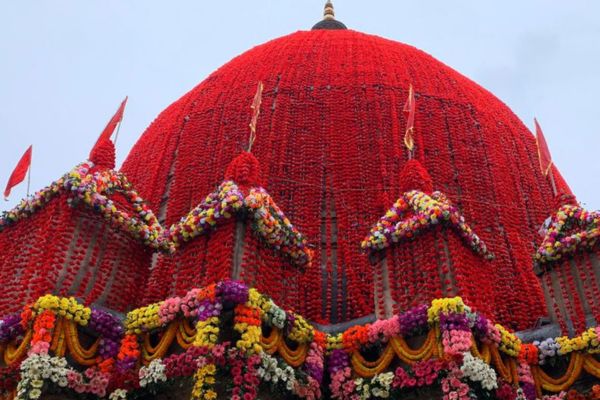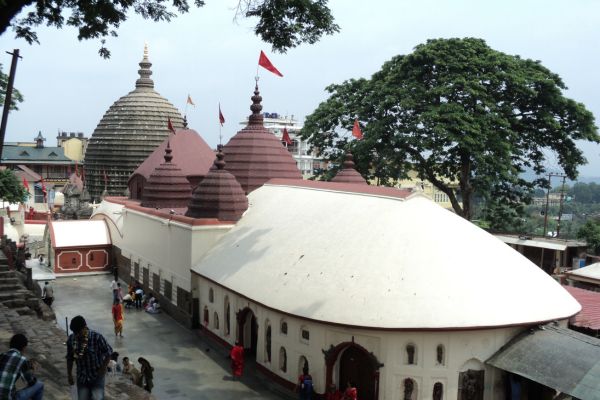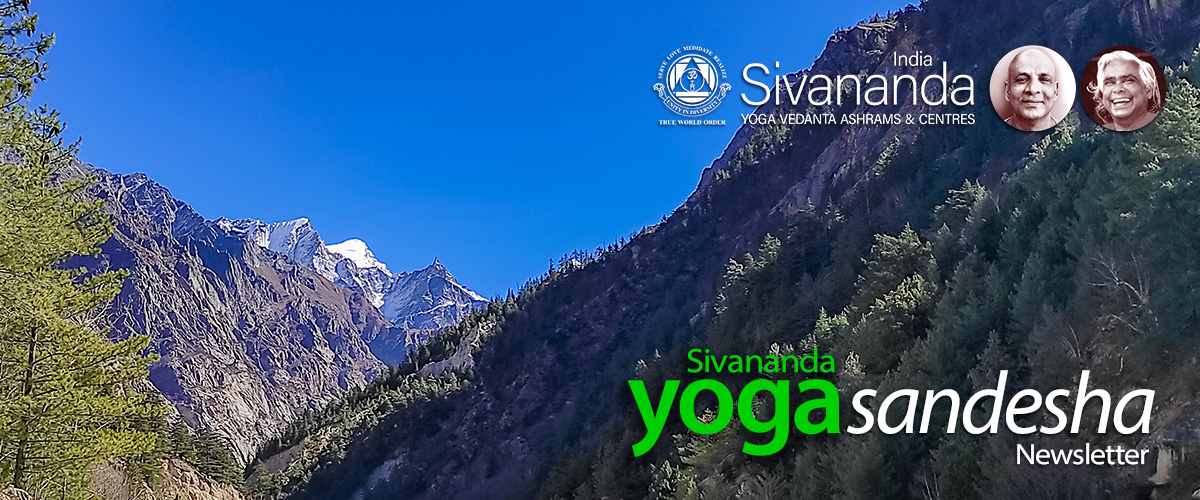
Om Namah Sivaya
Blessed Self,
We hope you all have made uplifting resolutions for 2024 and that your Sadhana is progressing with determination. We wish you all the best.
The New Year has started well for our ashrams in India with many Yoga Vacationers from all over the world. We are happy to see a young generation of guests with a yearning for the ancient wisdom and to find purpose in life, evidenced by the deep questions they ask us. Swamiji used to say that in life people tend to move away from their source, feel lost, and eventually develop a strong urge to return again. Although our Teachers’ Training Course numbers are down due to Visa and ongoing financial problems around the world, we trust that Master and Swamiji will take care and deliver more students eager to return to their source. We also invite TTC graduates from around the world to join us for our 2nd annual Teachers’ Training Refresher course from March 18 to 23 at the Madurai Ashram for connection and inspiration.
Our Neyyar Dam Ashram has almost returned to pre-pandemic numbers in the Yoga Vacation and Teachers’ Training Courses. Many staff are returning and our Sivananda Institute of Health is thriving with high demand for our results-oriented Ayurvedic treatments. As the SIH is now fully booked until the end of March, those wishing Ayurvedic treatments are being accommodated at our new location in the Madurai Ashram. Due to the high demand we also plan to expand the SIH facilities at Neyyar Dam within the next two years. Swami Vishnudevananda’s vision was to bring Yoga and Ayurveda together and we are glad to be able to grow what he initiated years ago.
The Sivananda Free Rural Medical Hospital at the Madurai Ashram is seeing over 1300 patients a week for free treatment and medications. We remain grateful for the generous donations and ongoing staffing support which makes this opportunity to serve the local community of poor farmers and labourers possible. This month we celebrate the 12th Anniversary of the Mahakali Temple in the Madurai Ashram with Kumbabishekam. Renovations and repairs to the roof, retention wall, and painting work are underway. We invite you to join us for this event and request you to donate to this noble project if you can. Please contact the Madurai Ashram for further details.
The initial struggles of our Gudur Ashram during the pandemic now seem in the past with an increased number of TTC students and a steady flow of Yoga Vacationers, attracted by the spacious land, thick greenery, and mango grove. A small staff team is inspired and working hard. Gudur is easy to reach from Chennai and other big cities in Andhra Pradesh.
In Uttarkashi, Swami Vishnudevanandaji’s vision for a Yoga Vacation programme at the Sivananda Kutir is being realised. The Free Medical Camp has been revived to much local appreciation. In 2024 we have plans to conduct the Bhagavatha Sapthaha for the local community in Hindi with a famous Bhagavatar Sri Sreekanth Sharma from Rajasthan, and for the local public, and to bring back the Advanced Teachers’ Training course after a 14 year break. We have also begun much needed restoration work to Swami Vishnudevanandaji’s Guha or cave in Gangotri.
Our centres suffered recently with floods and extreme cold weather, however, we remain positive that things will soon return to normal. We are carried by a strong faith that Master and Swamiji will take care of us as long as we sincerely practice our sadhana and teach what we practice.
If you haven’t already done so, please download copies of our new India brochure, new Yoga Sandesha Magazine, and 2024 Calendar.
All of our activities are made possible by your continued support. We really appreciate the faith that you place in us and so endeavour to find new avenues of service. May Master and Swamiji’s blessings be with you always.
Pranams,
Sivananda Yoga Vedanta Ashrams & Centres, India
Santosha, or contentment is one of the niyamas or observances of Raja Yoga. It seems out of place among the other niyamas–cleanliness or purity, austerity, study of scriptures, and self-surrender or surrender to God–because Santosha seems to be something that we just are, not something that we do. Or is it something that we can do? Can we control whether we experience contentment?
Contentment is the emotional state of the yogi: at peace with the present, not complacent, accepting of the self as it is, and accepting others and situations as they are. We learn to look at ourself as we would look at nature. We accept nature as it is, without trying to change it. The sky and the mountains don’t displease us in any way. In the same way when we accept ourselves and others as they are, we gain a certain freedom and contentment, which is our true nature.
To experience contentment, if we don’t have it, Vedanta says that our mind must be a little prepared in that it already has some small measure of contentment. The mind must already have a little of what it seeks to discover. So it seems that seeking contentment in small ways has value. We can learn to observe more keenly what is in front of us and observe whether we are searching or grasping in our yoga practice, or whether we are quietly softening and accepting into things as they are.
In this issue of Yoga Sandesha we explore contentment and greed through the teachings, a nourishing 3-day Kitchadi Cleanse, a mindfulness exercise using our mobile phone, and the acceptance of the power of women and fertility at the Kamakhya Devi Temple in Assam. Thank you for taking the time to read Sivananda Yoga Sandesha. We hope you enjoy the newsletter and find an opportunity for reflection. As usual, please feel free to reach out to us with your thoughts and feedback: [email protected]
Research/Links
So many people suffer from the discomfort of anxiety on daily basis that impairs their capability to live life fully & happily. Anxiety develops when a person lives more in the future than in the present, & Yoga offers hope against anxiety as Yoga teaches to live in the present. The following research provides insights into the efficacy of Hatha Yoga practice on reducing anxiety & improve the quality of life with practices including asana, breathing practices & meditation:
https://www.ncbi.nlm.nih.gov/pmc/articles/PMC5116432/
Spiritual Calendar
February 6 – Ekadasi
February 9 – New Moon
February 20 – Ekadasi
February 24 – Full Moon
Upcoming Courses:
Learn, Practise & Grow with Us!
Teachers’ Training Course (TTC)
- Feb 11 to Mar 9, 2024,
Gudur, Andhra Pradesh - Feb 18 to Mar 16, 2024,
Madurai, Tamil Nadu - Mar 17 to Apr 13, 2024,
Neyyar Dam, Kerala - Mar 17 to Apr 13, 2024,
Baddi, Himachal Pradesh
For more details, click here
Mindful Sadhana & Self-Development (ONLINE)
- Module 2: Energetic,
Feb 12 – 17, 2024 - Module 3: Subtle,
Mar 11 – 16, 2024
For more details, click here
Advanced Teachers’ Training Course (ATTC)
- February 11 to March 9, 2024,
Neyyar Dam, Kerala
For more details, click here
TTC Refresher Course
- Mar 18 to 23, 2024,
Madurai Ashram
For more details, click here
Teachings Excerpt:
Niyama and Santosha, by Swami Sivananda
The observances are (the practice of) internal and external purity, contentment, mortification, study of scriptures, and worship of God or self-surrender. Supreme happiness is obtained through contentment.
You will find in Yoga Vasishtha that Santosha, Santi, Vichara, and Satsanga are the four sentinels at the door of Moksha. If you have Santosha, the other three will come by themselves. Santosha, contentment, is one of the important virtues for an aspirant. Riches and poverty are not counted by the amount of wealth one keeps. A king, if he keeps too many desires and if he wants more, is considered to be a beggar. A beggar, if he is contented with what he has, is really a king. From contentment comes real happiness. If a man has no contentment, his mind will be always wandering. It will be impossible to do concentration and other Yogic practices. Therefore contentment should be developed by all aspirants.
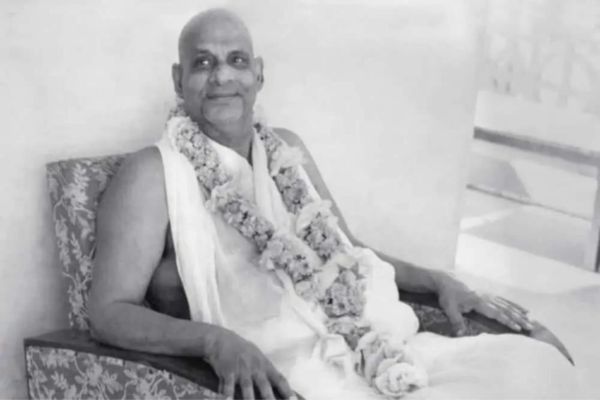
Teachings Excerpt:
Meditation and Mantras, by Swami Vishnudevananda
All thoughts, emotions, and actions that are in opposition to the basic tenets of the yamas and niyamas bring about the Karma of further pain and ignorance. This is true whether the action is actually carried out, remains in thought form, or is incited in other. Whatever the cause, whatever the degree of involvement, Karma is still incurred.
YS 2, v. 42 Samtoshad anuttamah sukha-labhah
From contentment comes supreme happiness.
Man is ever searching for happiness in external objects, but it can only be attained when the mind is satisfied with what has been allotted and is no longer looking. When the mind is stilled and contented, happiness is automatic.
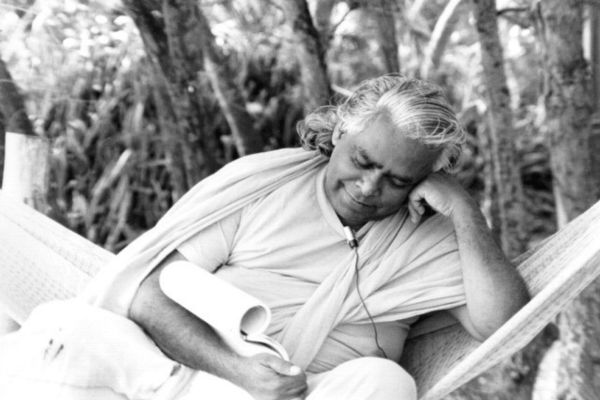
Practice and Teaching Tips:
Are You Searching? A Mindful Exercise With Your Phone
Being mindful means being fully present or aware, cultivating a moment-by-moment awareness of thoughts and feelings. Cultivating awareness through paying attention. Mindfulness is a mental state achieved by focusing one’s awareness on the present moment, while calmly acknowledging and accepting one’s feelings, thoughts, and bodily sensations. Mindfulness can, in fact, be used as a therapeutic technique.
Mindful attention can be applied to four different domains: the physical body (through sensations, breath, and position of the body), feelings (pleasant, painful, and neutral), the mind (by observation of the states of mind), and also to the teachings themselves. In yoga practice we can cultivate mindful attention by slowing down, finding stillness, and observing ourselves at all levels during the physical practices.
Here’s a very simple exercise to discover sensations, urges, even a feeling of searching through the body by holding your mobile phone—likely one of the strongest attachments for most of us. Lighten your touch, slow down, and cultivate mindful attention. Sit quietly for a few minutes and give it a try!
Best wishes for your practice. Pranams.
Ayurveda/Yoga Tips:
3-Day Ayurveda Khichdi Cleanse
Khichdi holds a huge relevance in Ayurveda diet and nutrition. It is possibly the most known Ayurveda recipe across the world for its light, digestive, nourishing, and cleansing properties. Ayurveda has always focused on the importance of agni (metabolism) for body-mind health, and khichdi is the most staple cleanse used to optimize agni. The khichdi cleanse helps give the body a break and resets the digestive system. This 3-day detox can help rejuvenate the body when done during a seasonal transition. Adequate rest supports the detox deeply; the best effects of the cleansing are experienced when the body is in a state of complete rest.
3-Day Khichdi Cleanse Diet Structure:
Breakfast – Khichdi with coriander chutney
Lunch – Khichdi with sauté vegetables as side dish and coriander-sesame seed chutney
Dinner – Khichdi with sauté vegetables as side dish
Note: Consume warm water, CCF Tea (recipe below), lemon water and herbal teas through the day to keep body hydrated during the cleanse. Avoid snacking between meals and have an early dinner between 6-7 pm.
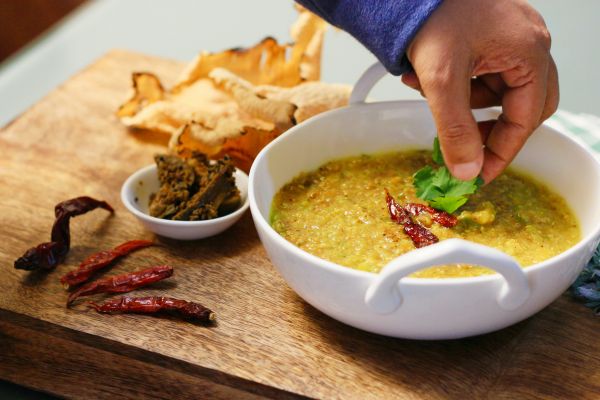
Vegetables Khichdi Recipe:
Khichdi is a staple cleanse recipe in Ayurveda. Traditionally made with basmati rice, split yellow mung beans, vegetables, spices, and ghee, it is a perfect recipe to nourish the body with ingredients that are light, easily digestible and provide energy to sustain the cleanse.
- 1/3 cup basmati rice
- 2/3 cup split yellow mung beans
- 1 tablespoon ghee
- 6 cups water approximately
- 1/2 inch grated ginger
- 1/2 teaspoon turmeric
- 1/2 teaspoon coriander seed powder
- 1/2 teaspoon cumin seeds
- 1 pinch of asafoetida
- ¼ cup chopped cilantro leaves
- Seasonal vegetables like carrot, beans, celery, broccoli, dandelion greens, cauliflower, cabbage, spinach, leeks and onions
Directions:
-
- Presoak rice and mung beans in filtered water for 30 minutes.
- Heat ghee in a wide cooking pot and sauté cumin seeds, turmeric, hing, and grated ginger. Sauté vegetables in the pot.
- Drain water from the rice and mung beans and add it with 6 cups water to the pot. Let it boil on high flame and let it cook on medium heat for next few minutes until soft (about 20-30 minutes). Keep stirring to avoid burning of dal and rice grains.
- Add other spices and top it with cilantro leaves.
CCF Tea:
CCF Tea stands for cumin, coriander, and fennel tea. Known in Ayurveda for its properties to cleanse the digestive tract of undigested matter, CCF tea is a staple in Ayurveda for igniting digestive fire and detoxifying the gut.
- ½ teaspoon of coriander seeds
- ½ teaspoon of cumin seeds
- ½ teaspoon of fennel seeds
Directions:
-
- Rinse the seeds well & add CCF seeds in a cup of water. Boil in a covered pan for nearly 15-20 minutes on low flame until the color of the tea turns golden tan. Strain & consume.
Coriander Chutney:
Coriander chutney in Ayurveda is tridoshic and cooling and adds an alkalizing touch to the khichdi.
- 1 bunch fresh coriander leaves
- 8-10 mint leaves
- Lemon juice
- 1/4 cup water
- 1 teaspoon sesame seeds
- 2 tablespoons fresh ginger root, chopped
- 1 teaspoon natural mineral salt
- 1/4 teaspoon fresh ground black pepper
Directions:
-
- Blend all the ingredients until it forms a paste.
Temple Showcase:
Kamakhya Devi Temple, Guwahati, Assam
The Kamakhya Devi temple is one of 52 main Shakti Peethas, or sacred places, where body parts of goddess Sati, consort of Lord Siva fell to earth. The legend of how the Shakti Peethas came into existence tells that after Sati died her body was cut into 51 parts by Vishnu’s Sudarshana Chakra. Out of grief and sorrow, Lord Siva carried Sati’s body around the universe. As Siva roamed, each place where one of Sati’s body parts feel became a Shakti Peetha.
It is said that the Yoni, or creative principle of goddess Sati fell at the site of the Kamakhya Devi temple. In her goddess Kamakhya form, she is worshipped as yoni, the source of creation that manifests in the material world as creative force of sexuality and fertility of anything that exists. In fact, there is no idol to worship in the temple, and the main worship form in the temple resembles female yoni set in natural stone.
The Temple is an important landmark and spiritual centre of the Assamese culture. Located in the serenity of lush Nilachal Hill in Guwahati, Assam, the Kamakhya Devi Temple is one of the most mysterious Shakti temples in India. Carrying a mystical energy with numerous stories about its origins, the temple is dedicated to Goddess Kamakhya and symbolically means, “one who fulfils desires”. The temple is an epitome of divine feminine energy and is vital to devotees of the Shakti tribe who worship the creative force, corelating the connection between creation and spirituality.
There are varied legendary stories around the origins of the temple. Another legend tells that Sati‘s Yoni fell at the temple space after her self-immolation while Lord Shiva performed his taandava (dance of destruction). Due to this legend the temple is also known as the Yoni-Sthana, or place of the yoni, suggesting the lower-most chakra or location of kundalini shakti. Symbolically the yoni is a metaphor for nature’s gateway of all births. Yet another legend attributes the temple’s existence to Hindu Goddess Parvati, stating that Lord Shiva built this shrine for her to meditate for a suitable husband. Kamakhya Devi is also worshipped as a newlywed and bride of Siva.
Located on a hilltop amidst the lushness of the land and with a natural spring called Uma-Kamaleshwar, Kamakhya temple holds special relevance for devotees believing in tantra. The temple is believed to be built around the 10th century by the Koch dynasty and has seen many phases of reconstruction after that. The most mystical spot in the temple is an underground natural cave where it is believed that Goddess Kamakhya Devi resides. The temple is divided into various chambers, with the third chamber housing the most sacred shrine, a yoni-like cleft in the bedrock.
The temple is located at the same place where Lord Siva turned Kamadeva into ashes when Kamadeva awakened Lord Siva with his arrow of desire. Temples of the ten Mahavidyas are situated on Nilachal Mountain around the Kamakhya Devi Temple, making it an important place for those following the paths of tantra and mantra.
The water element forms an important part of the temple. The Brahmaputra River flows near the base of the hill on which the temple sits. Curiously, this river is seen as a masculine river, while most other rivers in India are considered female.
One part of the temple contains a natural spring which continuously flows through the yoni. During the Ambubachi Mela in mid-June, a yearly event at the Kamakhya temple, the menstrual cycle of Goddess Kamakhya is celebrated. It is believed that the goddess menstruates for 3 days with the temple closed at that time, and the temple reopens on the 4th day in a powerful acceptance of women and the power of fertility.
For the locations of the Shakti Peethas, click here
From the Community:
The Nectar of Contentment, by Swami Saradananda
The yogic principle of santosh (contentment) marks the first step towards wisdom and peace of mind.
When I was a child, my mother would often admonish me to seek contentment. As I grew older, the word ‘contentment’ became repulsive, conjuring images of fat cows lazily ruminating in a sun-drenched field, with nothing to do and nothing to think about. My mind equated the word ‘contented’ with ‘fat’ and ‘lazy’. I couldn’t understand why my mother should wish me to be any of these things. I felt a burning desire to see and do everything and learn as much as I could.
Even when I started practicing yoga seriously at the age of 21, I saw it as an energetic means to know the world and all that is beyond it. For me, the goal was to reach that state of satchidananda (existence, knowledge, absolute bliss). At that time, it seemed like a distant goal that I had to exert hard to achieve.
Then I embarked on a diligent study of Raja Yoga. To my surprise, I found the contentment that my mother had been telling me about right there-in the form of santosh under niyamas, the second of the eight limbs of yoga. How was I to reconcile this with my ideal of constant and energetic striving?
After much deliberation, the real meaning of santosh became clear. I came to understand that my mind was always restless because of greed: greed for new experiences, new tastes in food, new acquisitions that I didn’t really need. I could feel myself being burned by an internal fire that was consuming my prana. Although I had been diligently practicing yoga, I frequently found myself exhausted without knowing why. Often, I put out more energy into obtaining things than I received in return.
To continue reading this article visit: https://www.lifepositive.com/the-nectar-of-contentment/
The New York-born Swami Saradananda is a disciple of Swami Vishnudevananda.
“There is no end of craving. Hence contentment alone is the best way to happiness. Therefore, acquire contentment.” -Swami Sivananda


